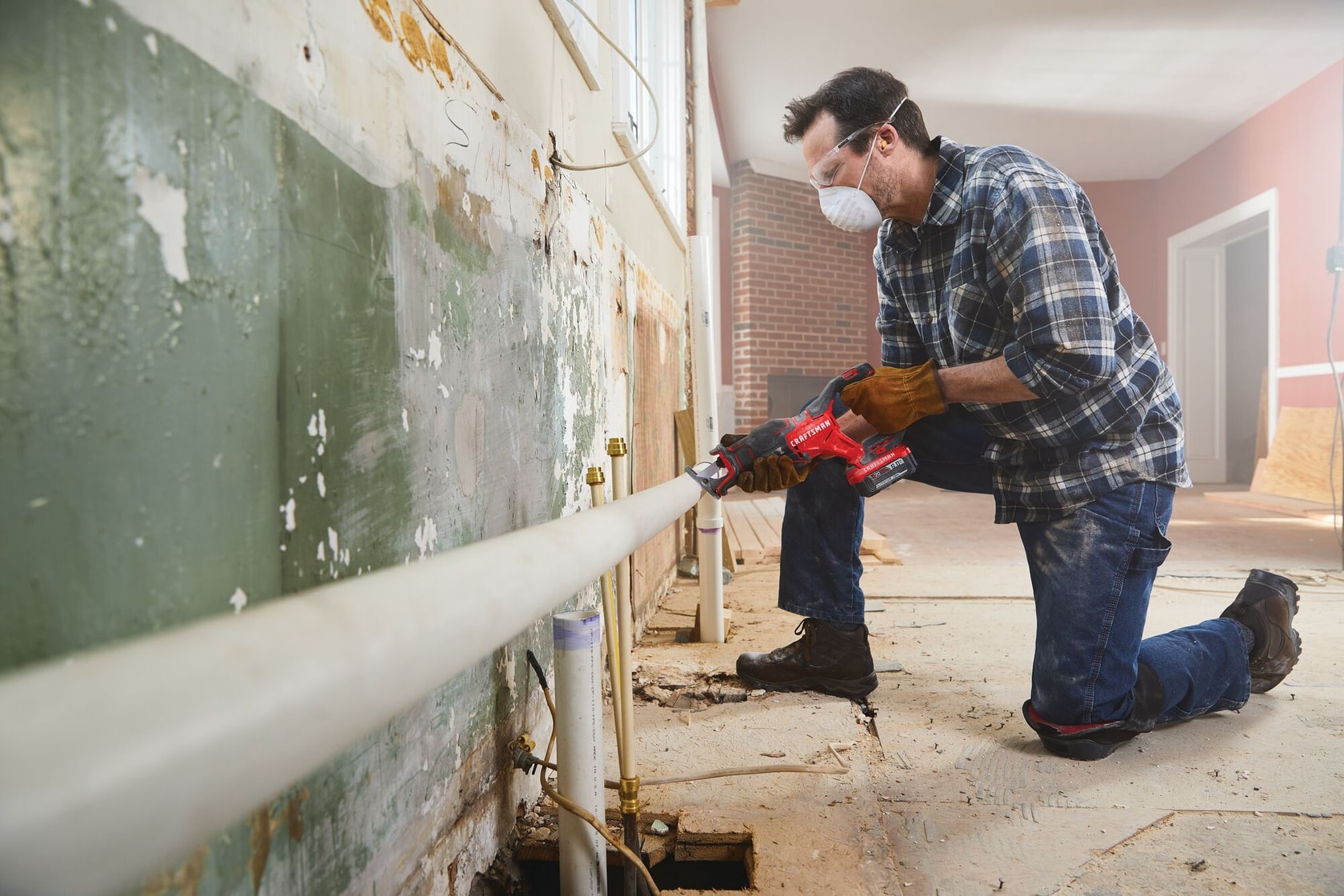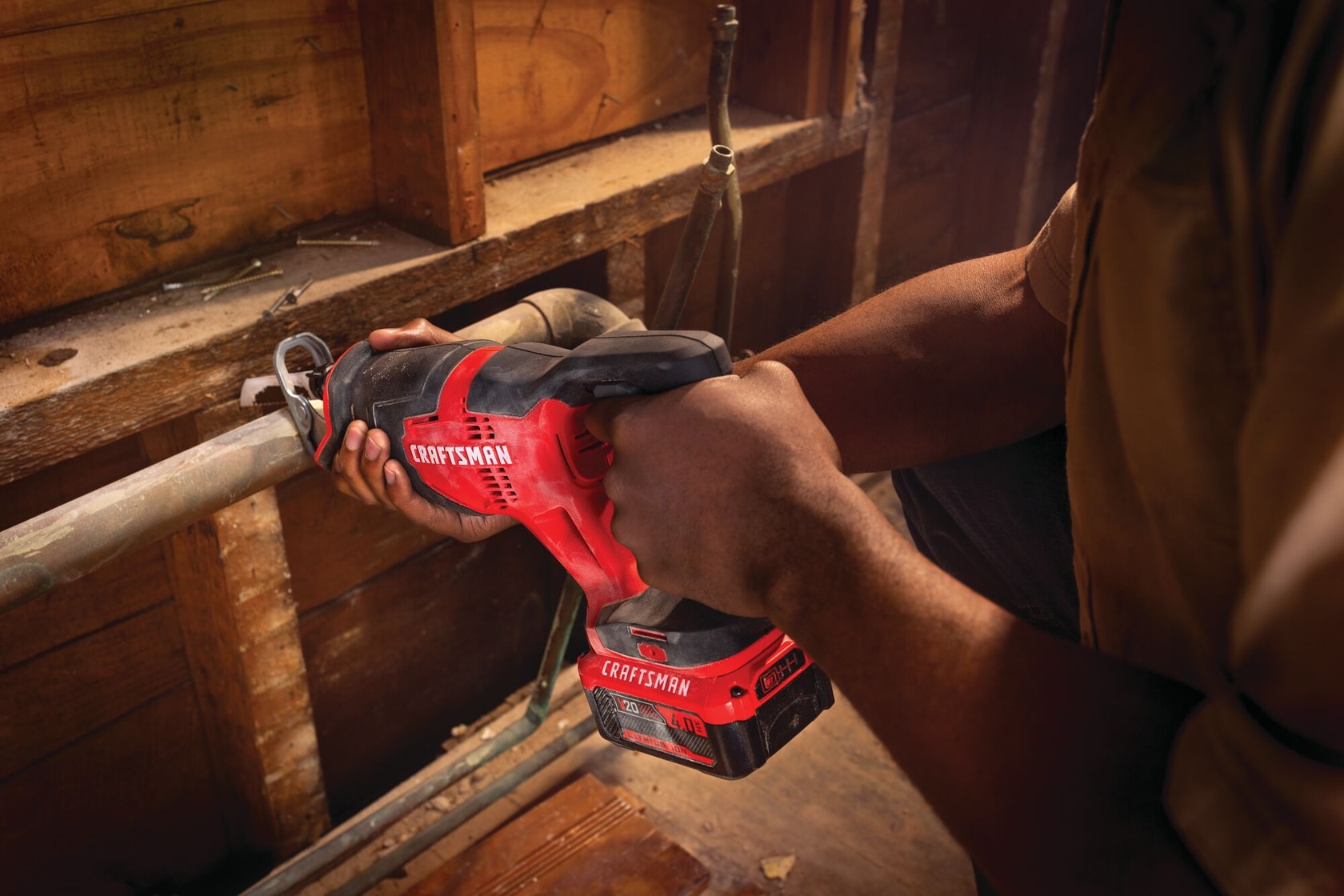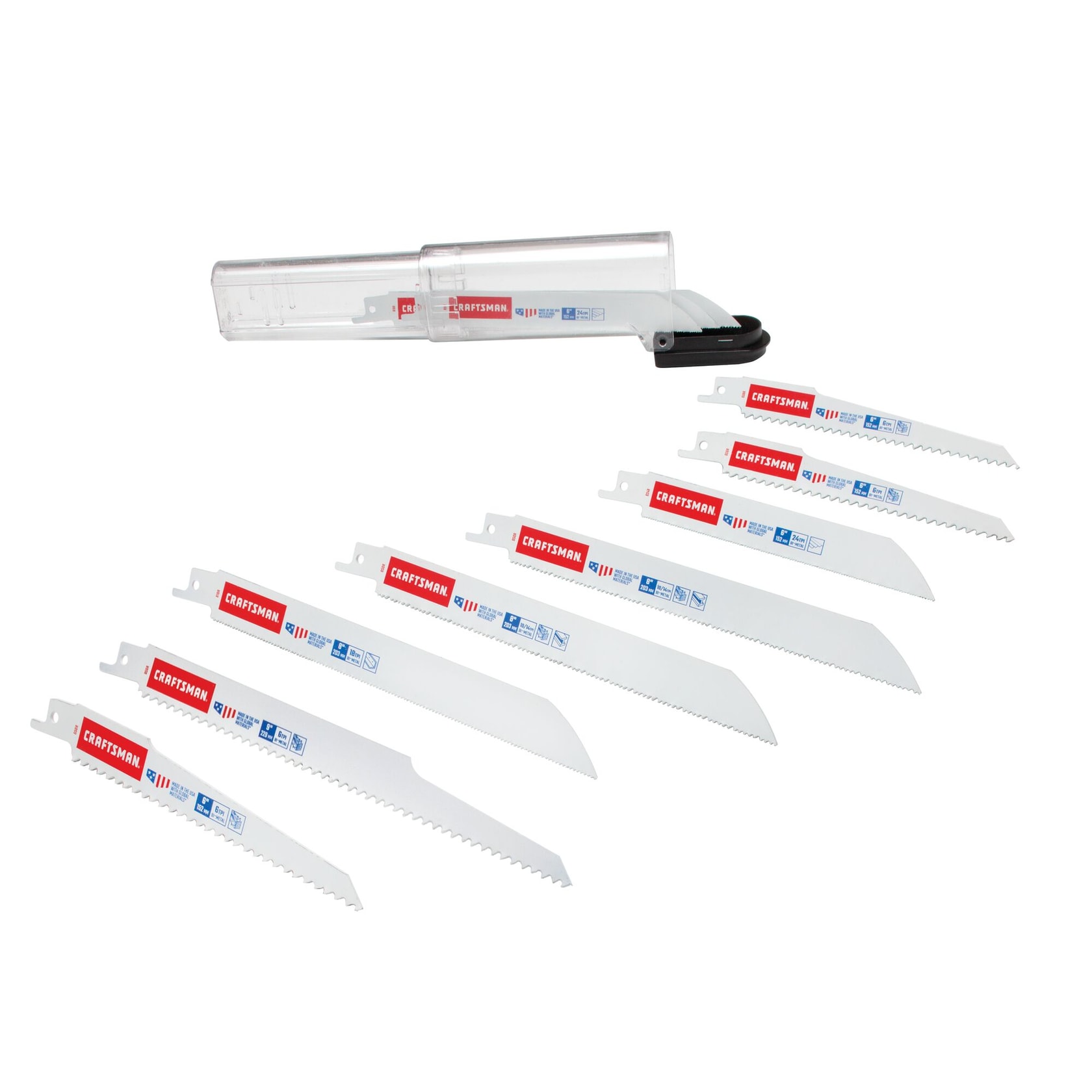- Trusted Expertise
- FAQs
Reciprocating Saws frequently asked questions
Answers to commonly asked questions


Make sure to check out the full line of CRAFTSMAN® Reciprocating Saws HERE
What are reciprocating saws used for?
Reciprocating saws are used for a variety of cutting tasks, including:
DEMOLITION: Reciprocating saws are ideal for cutting through walls, pipes, and other materials during demolition.
PRUNING: Reciprocating saws are also effective in pruning trees and cutting branches.
METALWORK: Reciprocating saws can cut through various metal objects, including pipes, sheet metal, nails, and other types of metal.
PLUMBING: Plumbers use these saws to cut through pipes and other materials during installations and repairs.
CONSTRUCTION: Reciprocating saws are used extensively for cutting lumber, drywall, and other materials.

What are the different types of reciprocating saws?
There are several types of reciprocating saws available on the market, including:
CORDED RECIPROCATING SAWS: Powered by electricity, corded reciprocating saws are well suited for heavy-duty cutting tasks.
CORDLESS RECIPROCATING SAWS: Battery-powered saws offer more portability and convenience and are ideal for cutting in tight spaces and on the go.
COMPACT RECIPROCATING SAWS: These saws are smaller and designed for lighter cutting tasks. They are ideal for cutting in tight spaces where a larger saw won't fit.
What does stroke length mean on a reciprocating saw?
The stroke length on a reciprocating saw refers to the distance that the saw's blade travels back and forth during each stroke. It is typically measured in inches and can range from about 3/4 inch to 1-1/4 inches in length. Reciprocating saw blades are designed to work on all reciprocating saws regardless of stroke length.
Consider the stroke length when choosing a reciprocating saw, as it determines how quickly and efficiently the saw can cut through materials. A longer stroke length means the saw's blade can cover more ground with each stroke, cutting through thicker materials more quickly.
However, a longer stroke length can also make the saw hard to control, particularly when cutting through thinner materials. A stroke length of 1 inch or less is sufficient for most cutting tasks, while a longer stroke length may be necessary for heavy-duty cutting applications.
What size blades do reciprocating saws use?
Reciprocating saw blades come in different lengths depending on the thickness and type of the material you're cutting. The most common blade lengths are 6, 9, and 12 inches, but shorter and longer blades are also available.
In general, the longer the blade, the deeper the cut it can make. In addition to the blade size, the general recommendation is to choose a blade with 2-3 teeth per inch (TPI). Choosing the right blade length for the job is required, as longer blades can be difficult to control.

What kinds of blades do reciprocating saws use?
Reciprocating saws can use a variety of blades designed for specific cutting tasks, including;
WOOD-CUTTING BLADES: These blades have large teeth designed to cut through wood quickly. Wood-cutting blades are ideal for cutting branches, framing, and other woodworking projects.
METAL-CUTTING BLADES: These blades have smaller teeth and can cut through pipes, sheet metal, and other types of metal quickly and efficiently.
DEMOLITION BLADES: These blades have a longer length and thicker teeth that make them ideal for cutting through a mix of materials like wood, nails, screws, and bolts.
TILE CUTTING BLADES: These blades have a fine-toothed edge that can cut through ceramic and other types of tile.
Choose the right blade for the job to ensure the best results and avoid damaging the blade or the saw. Reciprocating saw blades work best with specific materials, so read the blade packaging carefully before using it.
Reinventing How-To

DIY kids playroom tutorial
Follow along with Nik & Liv’s step-by-step guide to create to coolest kid’s playroom space with the help of CRAFTSMAN® tools.

